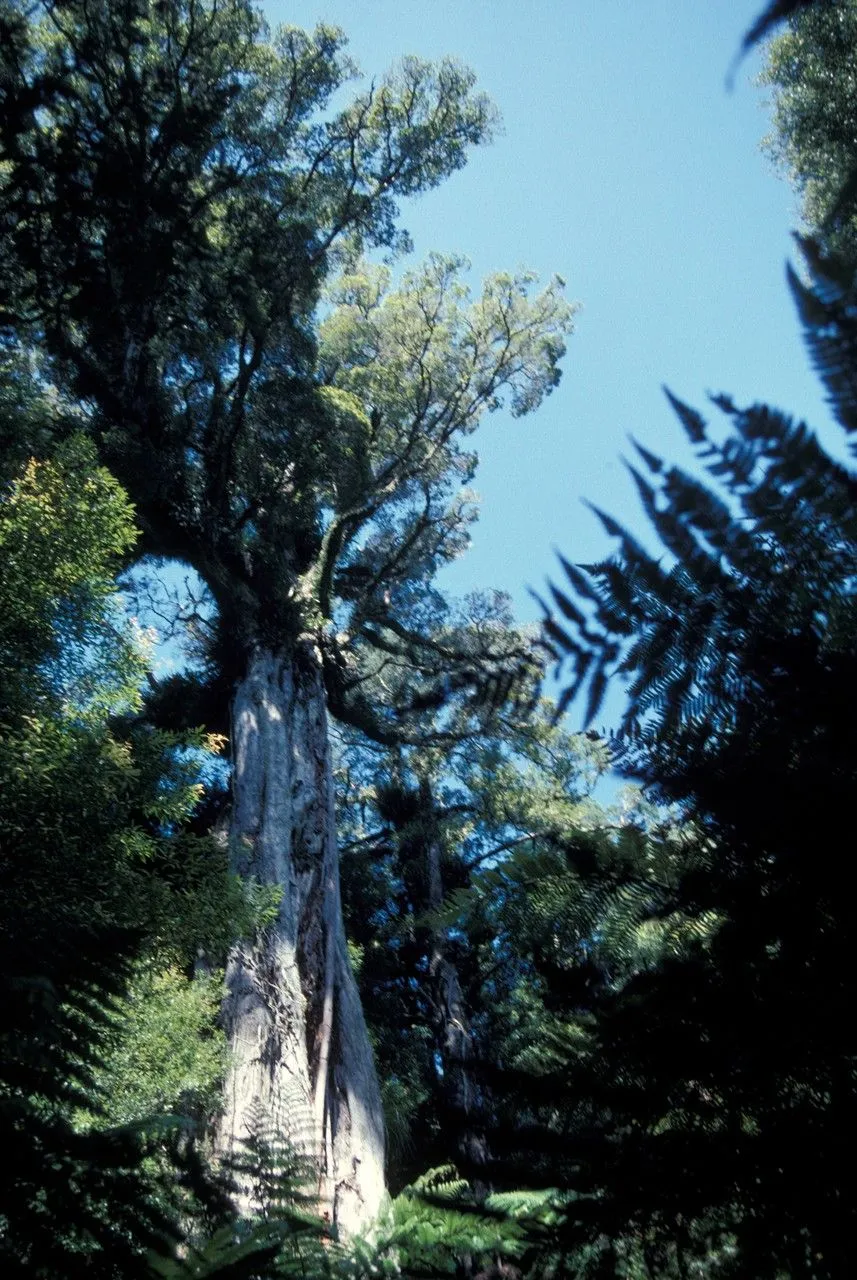
Author: A.Cunn.
Bibliography: Ann. Nat. Hist. 3:112. 1839
Year: 1839
Status: accepted
Rank: species
Genus: Metrosideros
Vegetable: False
Observations: New Zealand
Northern rata, scientifically known as Metrosideros robusta, is a remarkable and iconic tree native to New Zealand. The species was first described in 1839 by the botanist A. Cunningham, and it belongs to the Myrtaceae family. This magnificent tree plays a significant role in New Zealand’s natural heritage and is known for its impressive size and unique biological attributes.
Northern rata trees are predominantly found in the forests of New Zealand, where they typically begin life as an epiphyte, sprouting in the canopy of a host tree. Over time, they send roots down to the forest floor, eventually enveloping the host tree. This life strategy allows the northern rata to reach great heights and spread its dense canopy, which provides essential habitat and food for various native birds and insects.
One of the most striking features of Metrosideros robusta is its vibrant red flowers, which bloom in profusion during the warmer months. These flowers, rich in nectar, attract numerous pollinators, contributing to the ecological diversity of New Zealand’s forests. The flowering season transforms these trees into a visual spectacle, making them a beloved sight for locals and tourists alike.
In addition to their ecological importance, northern rata trees have cultural significance for indigenous Māori. The wood of these trees was traditionally used for building and carving due to its robustness and durability. Furthermore, the tree’s presence in the forest is often seen as a symbol of strength and resilience.
Conservation efforts are crucial for the ongoing survival of northern rata trees, as they face threats from habitat loss, invasive species, and climate change. Various conservation projects aim to protect and restore northern rata populations, ensuring that this iconic species continues to thrive in its native environment.
In summary, Metrosideros robusta, or northern rata, is a distinctive and vital component of New Zealand’s natural and cultural landscape. Its unique life cycle, ecological role, and stunning floral display make it a tree of both scientific interest and widespread admiration.
Eng: northern rata
En: Northern rata
Taken Dec 1, 1998 by Daniel Barthelemy (cc-by-nc)
Taken Dec 1, 1998 by Daniel Barthelemy (cc-by-nc)
Taken Dec 1, 1998 by Daniel Barthelemy (cc-by-nc)
Taken May 5, 2022 by Dieter Albrecht (cc-by-sa)
Taken Aug 11, 2019 by Jules Millet (cc-by-sa)
Taken Dec 1, 1998 by Daniel Barthelemy (cc-by-nc)
Taken May 5, 2022 by Dieter Albrecht (cc-by-sa)
Taken Aug 1, 2022 by Kai Best (cc-by-sa)
Taken Apr 27, 2019 by Pierre Bonnet (cc-by-sa)
Taken Aug 11, 2019 by Jules Millet (cc-by-sa)
Taken May 5, 2022 by Dieter Albrecht (cc-by-sa)
Taken Aug 1, 2022 by Kai Best (cc-by-sa)
Taken Apr 27, 2019 by Pierre Bonnet (cc-by-sa)
Taken Apr 27, 2019 by Pierre Bonnet (cc-by-sa)
Taken Aug 11, 2019 by Jules Millet (cc-by-sa)
Taken Aug 1, 2022 by Kai Best (cc-by-sa)
Taken Apr 27, 2019 by Pierre Bonnet (cc-by-sa)
Taken Aug 11, 2019 by Jules Millet (cc-by-sa)
© copyright of the Board of Trustees of the Royal Botanic Gardens, Kew.
Family: Myrtaceae Author: (F.Muell.) K.D.Hill & L.A.S.Johnson Bibliography: Telopea 6: 402 (1995) Year: 1995 Status:…
Family: Rubiaceae Author: Pierre ex A.Froehner Bibliography: Notizbl. Bot. Gart. Berlin-Dahlem 1: 237 (1897) Year:…
Family: Sapindaceae Author: Koidz. Bibliography: J. Coll. Sci. Imp. Univ. Tokyo 32(1): 38 (1911) Year:…
Family: Asteraceae Author: A.Gray Bibliography: Pacif. Railr. Rep.: 107 (1857) Year: 1857 Status: accepted Rank:…
Family: Fabaceae Author: Medik. Bibliography: Vorles. Churpfälz. Phys.-Ökon. Ges. 2: 398 (1787) Year: 1787 Status:…
Family: Aspleniaceae Author: (Cav.) Alston Bibliography: Bull. Misc. Inform. Kew 1932: 309 (1932) Year: 1932…